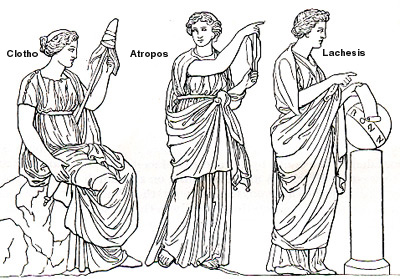The Vesper Lynd
This history of mixology is riddled with dubious tales of origin, of outlandish claims made by notable barkeeps, of contradictory accounts. But one notorious cocktail (which, by the way, is technically illegal to serve in several American states due to the fact that it requires the mixing of two liquors in one beverage) about which much is known is the elusive Vesper Lynd.
As with any vintage cocktail, countless variations on this drink have been committed to text over the decades. But the original recipe, created at the Boodle’s gentlemen’s club in London in the early 1950s, is as follows:
2 ounces of Boodle’s gin (originally sold only at the exclusive club of the same name)
1 ounce of Russian vodka
½ ounce of Lillet blanc (an orange liqueur)
These ingredients are to be shaken over ice and strained into a chilled cocktail glass. The glass is then garnished with a lemon twist. The final product is exquisite in both flavor and appearance. The qualities of the cocktail itself, however, are eclipsed in interest by the story surrounding the drink’s popularity. One notable member of the Boodle’s club (along with historical heavyweights such as David Hume, Adam Smith, and Sir Winston Churchill) was author Ian Fleming.
He was so taken by the barkeep’s concoction that he featured a version of the recipe is his first James Bond novel, Casino Royale. Bond, in the book, claims to have created the drink, and eventually names it the Vesper. This name derived from his untrustworthy love interest, Russian spy Vesper Lynd (her name being a pun on West Berlin). The mixing of English gin and Russian vodka signified the bond between the two spies. After Bond is betrayed by Lynd, he swears off the cocktail forever.
Although the original 1967 production of Casino Royale was a satirical treatment of the novel starring Peter Sellers as Bond and Ursula Andress as Versper, it was popular enough to place the Vesper martini into the cocktail cannon.
While many cocktails, ranging from the Mai Tai to the Churchill Martini, have excellent histories, the Vesper Lynd is, as far as I know, the only popular cocktail that was born out of the Cold War-Era tension between Capitalist and Communist alliegances.
Some Further Reading:
An interesting look at some different claims made regarding the invention of the Mai Tai
The Giant and the Midget
In the wake of the Great Depression, President Franklin D. Roosevelt was desperate to garner public and political support for The New Deal, an ambitious program that, he hoped, would pump much needed stimulation into the United States’ stumbling economy. In 1933 the Senate Banking Committee held a series of hearings to investigate the financial practices of banking giant J.P. Morgan, Jr., who controlled the corporate behemoth founded by his father, and was also instrumental in establishing the Federal Reserve in 1913. Morgan’s high profile set the stage for his testimony to receive wide media coverage. This may have been the first event, in fact, to be dubbed a “media circus”.

John Pierpont Morgan, 1867-1943.
Coincidentally, the Ringling Brothers Circus was in Washington during the dates of Morgan’s testimony. Capitalizing on this peculiar opportunity, the circus’ press agent arranged for one of its performers, a 27-inch-tall midget named Lya Graf, to be present at the public hearings. When Graf was awkwardly introduced to Morgan, she hopped onto his lap and sat like a child. This allowed for a most interesting photograph to be taken. Depicting a physically deformed sideshow performer sitting on the lap of a man who epitomized wealth and corporate greed, this image captures in a whimsical yet biting way the disparities between the rich and the poor in the United States during the height of corporate capitalism in the early 20th Century. Simultaneously silly and grotesque, the contrast between Graf and Morgan visually expresses the vast inequalities that defined the economic state of America in 1933. It was an image that spoke volumes.

The contrast between Morgan and Graf, most strikingly that of their sizes and implicit power, acted as a real life political cartoon, simultaneously explaining and satirizing the inequalities that defined Depression Era America. The popularity of this photo improved Morgan’s public image and turned Graf into a media darling, if only briefly.
This image resonates particularly well in modern day America, in which class division and unchecked corporate accumulation is reminiscent of the Depression Era. Imagine how poignant a photograph of Warren Buffet cradling an illegal Mexican laborer would seem in light of the current social and economic climate.
Some Further Reading:
An excerpt from a book on the Morgan family that discusses this incident
An article focusing on Graf and her role in this photograph
A succinct introduction to Roosevelt, the Depression, and the New Deal
Oliver, the Humanzee

In 1960, in the African nation of Zaire (now the Democratic Republic of Congo), a peculiar discovery was made. It was a young male chimpanzee with a strikingly humanoid face and the propensity for bipedal locomotion (a trait previously unobserved amongst chimpanzees). This bizarre animal found its way into the care of American animal trainers Frank and Janet Berger who dubbed their new pet Oliver.

Oliver exhibiting his characteristic upright stance. He was rarely seen walking on his knuckles.
Oliver showed a strong desire to adapt as many human affects as possible, including smoking cigars, shunning the company of other chimpanzees, and even making sexual overtures toward Janet. When put on display in the public eye, Oliver became a media sensation, and was widely believed to be some sort of missing link or human-chimpanzee hybrid. Genetic testing did in fact reveal that Oliver possessed forty-eight chromosomes, one more than is common in chimpanzees, and one less than is common in humans. In lieu of any further discussion of Oliver, I have included below the complete documentary produced by the Discovery Channel in 2006 exploring this strange creature and his unique story.
Victorian Postmortem Portraiture

During the Victorian Era (1837 – 1901) in the United States and Europe, a peculiar funerary practice emerged. Due in part to the high youth mortality rates and in part to the recent popularization of daguerreotype photography, it became commonplace to have professional portraits taken of recently deceased loved ones, most commonly children.

These morbid images were often the only glimpses of the deceased that distant relatives ever had the chance to experience. Originally considered luxuries, such portraits became increasingly affordable as ambrotypes and tintypes were developed during the second half of the 19th century.

Since these photographs were meant to serve as memorials of the individual’s lives, the subjects were often formally dressed, fully made-up, and strapped upright in chairs to give them a semblance of vitality. This effect was sometimes enhanced by pink tinting later added to the photographs, making the lifeless faces appear flushed.
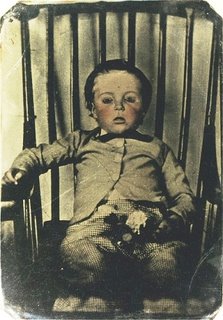
It was not uncommon for parents to pose with the corpses of their infants, or for children to surround the remains of their siblings.
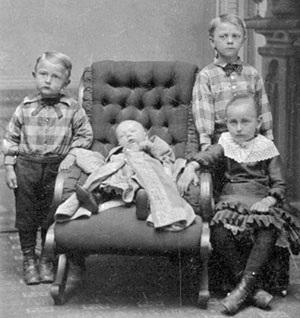
Later examples of postmortem portraiture occasionally depict the deceased propped upright in coffins, simultaneously simulation life and acknowledging the lifelessness of the corpse.

While this tradition has all but vanished in modern day United States and most of Europe, various Orthodox communities in Eastern Europe still practice this form of commemoration, although focusing primarily on distinguished members of their religious communities. There are also some organizations in contemporary America that aim to revive this antiquated tradition. However, due to shifting norms and modern conceptions of death and bodies, photographs of corpses are perceived more as unseemly than as sentimental, evoking shutters of chilled terror in those who occasion to glimpse the open eyes of a lifeless face.
Some Further Reading:
The homepage of the Thanatos Archive, a collection of 19th century postmortem portraits
The Haunting Specter of Phobos

The planet Mars is orbited by two irregularly shaped moons, neither larger that 15 kilometers across. The smaller of the two, named Phobos after the Greek god of terror, measures only about 11 kilometers across and is closer to its primary planet than any other moon in our solar system. It is so close to the surface of Mars, in fact, that it orbits the planet twice daily. What has led astronomers, writers, and science fiction enthusiasts to so much speculation regarding Phobos is its peculiar size and shape, making it look like a sinister extra terrestrial skull drifting through the void of space.

This series of photos shows Phobos passing in front of the sun, as seen from the surface of Mars by the NASA rover Opportunity
Discovered in 1877, Phobos has long stood out amongst non-planetary astronomical bodies due, in addition to its odd shape, to the non-reflective quality of its surface. This has led astronomers to speculate that it may have originally been an interstellar asteroid that was caught in Mars’ gravitational orbit. The porous nature of its composition suggests that Phobos’ mass is startlingly low, an observation which led to a widely-held theory, popular in the 1950s and 1960s, that Phobos is nothing more than a hollow metal shell, perhaps serving as a Martian space station. This reasoning has been called into serious question by more recent observations.

When studying Phobos from afar, much attention has been paid to its series of odd and quite large craters. Several of these are named after characters from Jonathan Swift’s 1726 novel Gulliver’s Travels, which hypothesized that Mars has two moons many years before this was discovered to be the truth. The largest crater, dubbed Stickney after the wife of the astronomer who first identified Phobos, measures 9 kilometers across.

Stickney Crater as seen by the Mars Reconnaissance Orbiter
What makes Phobos an object of particular interest, however, is not its curiously porous composition. Phobos stands out in the night sky because of the undefinably ghastly quality of its appearance. Whether imagined as the rotted skull of an immense species long extinct, a ghostly bit of refuse from a distant, wicked solar system, or a malicious eye socket gazing at us from a mere 35 million miles away, Phobos is aptly named. It seems fitting, then, that Phobos itself is not long for this world. Due to its low orbit, Phobos is expected to, in about 11 million years, crash into the surface of Mars, crushing this celestial wraith into bits of dust.
Some Further Reading:
Some interesting facts about Phobos
A succinct list of facts about Phobos, complete with various maps and images
The Most Beautiful Combination of Words
Years ago a poetry-obsessed friend told me that he’d read an essay in which the author proclaimed “cellar door” to be the English language’s most beautiful pairing of words. I ran the phrase over and over in my mind, but failed to see it as particularly impressive. The image of a weathered door leading to a dank stone cellar is captivating to a degree, but not particularly special. And the words themselves, experienced as phonetic sculptures or tongue exercises, are no more pleasing than countless others.
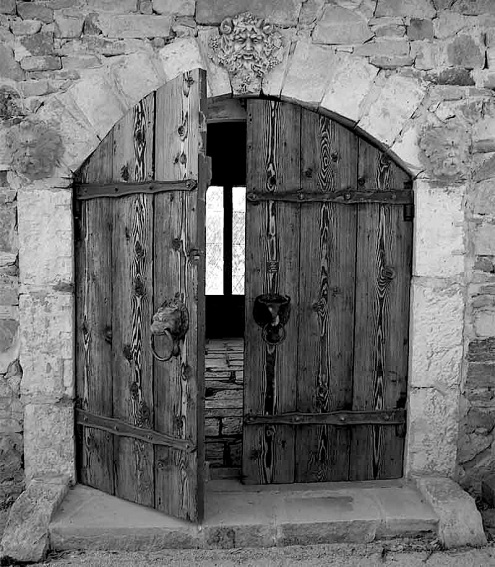
I’d forgotten all about this notion until I recently watched the 2001 film Donnie Darko. In one scene, the character played by Drew Barrymore states, with a gleaming of dull-witted awe in her eye, “This famous linguist once said that of all the phrases in the English language, of all the endless combinations of words in all of history, that Cellar Door is the most beautiful.” Now I had to get to the bottom of this pseudo-intellectual hogwash.
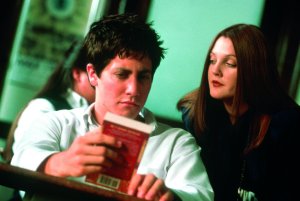
It turns out that the “famous linguist” referred to by the film was none other than Lord of the Rings author J.R.R. Tolkien (although Richard Kelley, the film’s director, later misattributed the quote to Edgar Allen Poe). Tolkien’s first mention of the phrase was in an essay entitled English and Welsh, which he originally delivered as an address to the Oxford University class of 1955. The line in question is as follows:
“Most English-speaking people…will admit that ‘cellar door’ is beautiful, especially if dissociated from its sense (and from its spelling). More beautiful that, say, ‘sky’, and far more beautiful than ‘beautiful’…”
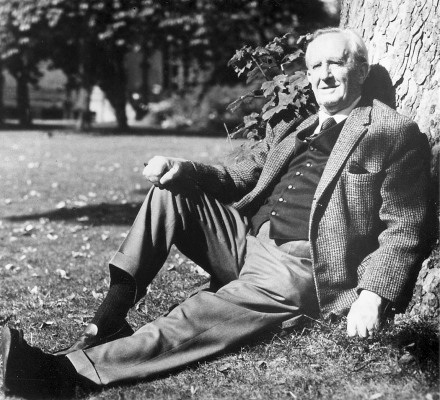
Tolkien’s appreciation of the phrase was divorced from its semantic meaning. In fact, according to a later interview, his use of the phrase was meant simply to illustrate the point that some phonemes, when combined in certain ways, are particularly euphonious and served as inspiration for names and places in his writing.
“Supposing you say some quite ordinary words to me – ‘cellar door’, say. From that, I might think of a name, ‘Selador’, and from that a character, a situation begins to grow.”
So the beauty of the phrase clearly relies on Tokien’s English accent. While Drew Barrymore’s American character in Donnie Darko pronounced the phrase SELL-ur–DOR, Tolkien meant it to be pronounced SEH-luh–dor. I must admit that there is a fantastical, airy quality to the phrase when pronounced thusly. But my mind still isn’t blown by it. Here are some other words and phrases that I find just as delightful, although for different reasons:
Eggplant – More than any other word I know, eggplant forces the speaker to completely reposition his tongue, lips, and teeth in order to switch from the end of the first syllable to the beginning of the second. The word requires a certain acrobatic maneuvering of the mouth, which makes it very engaging to speak aloud. Other good examples of this are dump truck and retrograde, although they are not quite as severe.
Atom bomb – Pronouncing this word causes the speaker to essentially play the drums with his tongue. AAH-dum-BOM is percussive in a way that seems to reference the violent force of the object to which the phrase refers.
Nariokotome (Pronounced NAH-ree-uh-KOT-uh-mee) – This area, located near Kenya’s famed Lake Turkana, is where, in 1984, archaeologist Richard Leaky discovered the nearly complete skeleton of an adolescent Homo erectus male, dubbed Nariokotome Boy. I am fond of this word because when it is split down the middle, it becomes two three-syllable phrases that play off of each other wonderfully. NAH-ree-uh has a wistful quality, and could have easily been used by Shakespeare to name one of his female woodland faeries. KOT-uh-mee is much more sharp, and does not allow the syllables to lazily blend into one another. It reminds me of a heavy knife repeatedly striking a cutting board. When spoken as a whole NAH-ree-uh-KOT-uh-mee sounds almost like a first and last name, perhaps that of a mythical maiden with a first name denoting peace and mildness, and a family name implying that she comes from a clan of powerful warlords (I guess I’ve caught the Tolkien bug). It is this contradiction that makes the word stand out to me.
Anemone – The four syllables of this word flow effortlessly from one into the next, allowing an unbroken hum to accompany the pronunciation of the letters. When spoken over and over in rapid succession (uh-NEH-muh-nee-uh-NEH-muh-nee-uh-NEH-muh-nee…) it quickly dissolves into a chain of playful nonsense sounds, all undertoned by an ohm-like hum.
There are countless other words and phrases that are just as pleasing, if not more so, to the tongue and to the ear. I encourage you to reply to this post with some of your favorites. Please describe in detail what you like about them. Nonsense words are encouraged as well. I’m more interested in pronunciation than in meaning.
Some Further Reading:
An interesting essay about Tolkien’s fictional languages
A dictionary and description of “Nadsat”, the pidgin language that Anthony Burgess invented for his novel “A Clockwork Orange”






